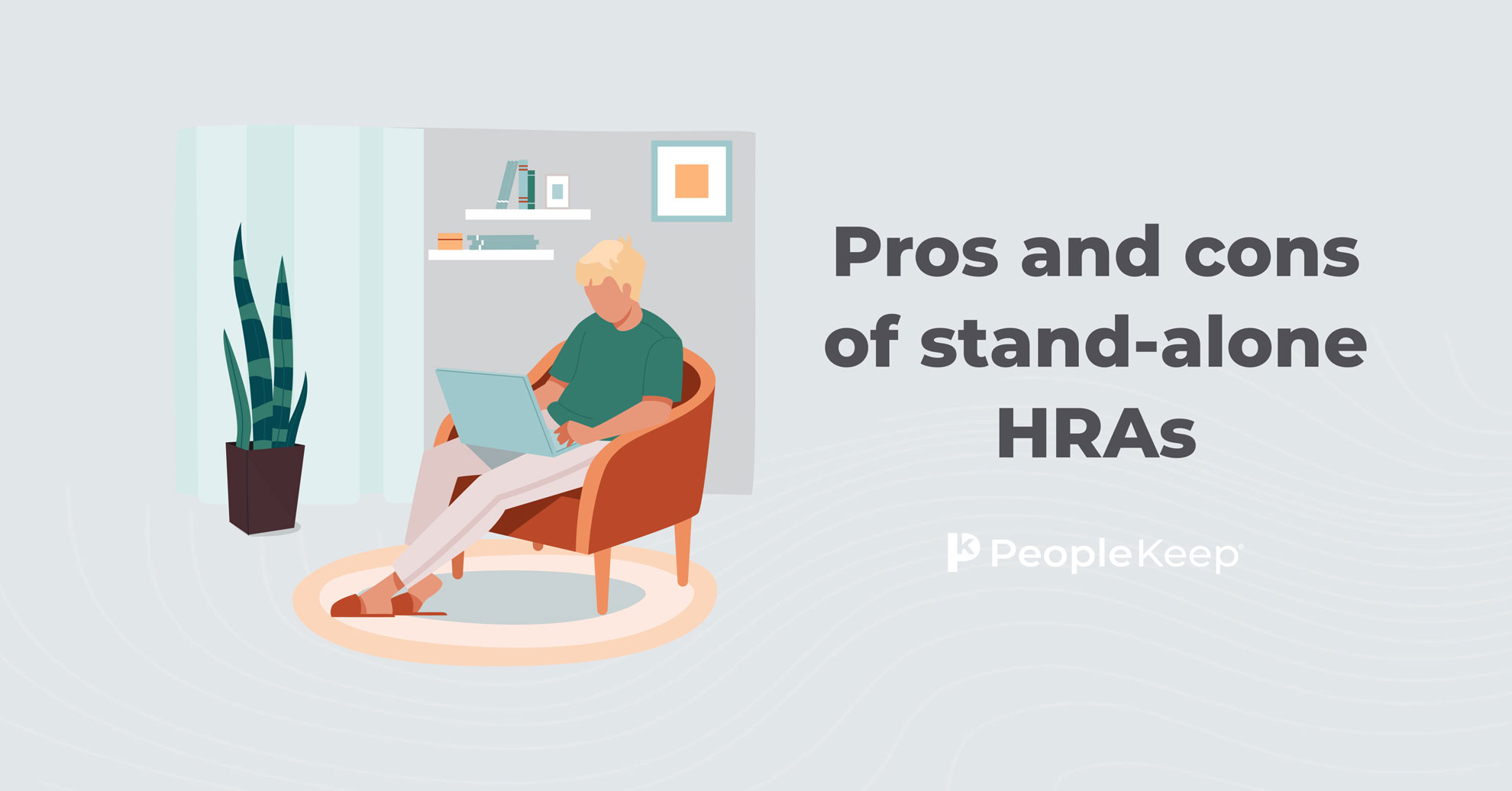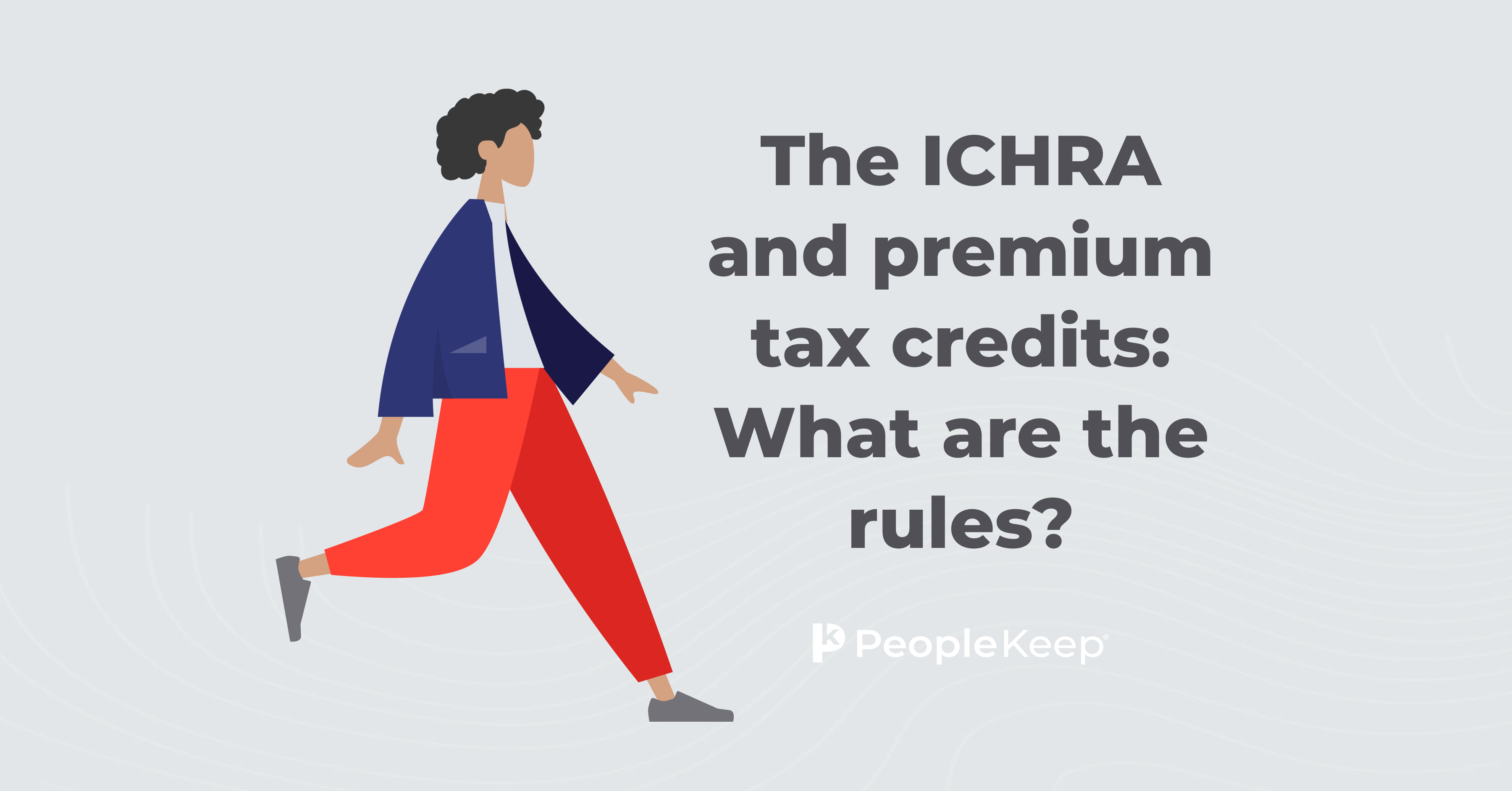What is the cost of a stand-alone HRA?
By Elizabeth Walker on August 4, 2023 at 10:01 AM
Health benefits are an essential component of any employer’s compensation package. But if you’re a small to medium-sized organization, you may not be able to afford or meet the participation requirements of traditional group health insurance.
Luckily, a health reimbursement arrangement (HRA) is an excellent option if you find yourself in this scenario. Stand-alone HRAs, in particular, are a more flexible alternative than traditional group health policies for employers of all sizes and are typically more affordable for small business owners.
In this article, we’ll review what stand-alone HRAs are and how you can determine the cost of implementing one at your company.
Learn more about how HRAs can work for you and your employees in our guide
What is a stand-alone HRA?
A stand-alone HRA is an IRS-approved health benefit that enables employers to cover the cost of employees’ individual health policies and other eligible health expenses. Unlike excepted benefit HRAs (EBHRAs) and integrated HRAs, you don’t link a stand-alone HRA to an employer-sponsored group health plan. Instead, they’re an alternative to group health insurance.
With these types of HRAs, employees purchase their own individual medical plans, and employers reimburse them for their health insurance premiums and other out-of-pocket medical expenses up to a set monthly allowance.
Unspent HRA funds roll over from month to month until the end of the coverage period. And unlike health savings accounts (HSAs), HRAs are employer-owned and employer-funded. So unused HRA funds stay with you if an employee leaves your company, making them even more cost-effective than other health benefit options.
Two popular stand-alone HRAs are the qualified small employer HRA (QSEHRA) and the individual coverage HRA (ICHRA). There are many advantages to either type of HRA, but deciding which is right for your organization depends on your company size, budget, and your employees’ needs.
In the sections below, we’ll go over each stand-alone HRA to help you understand how they can work for your organization.
Qualified small employer HRA (QSEHRA)
QSEHRAs are made for organizations with fewer than 50 full-time equivalent employees (FTEs). They’re flexible for employees because they enable employees to choose the individual health insurance plan that works best for them and their families. Once an employee submits proof of an eligible expense and it’s verified, you reimburse them for the cost.
Like other HRAs, QSEHRAs have tax advantages. For employers, reimbursements are exempt from payroll taxes, like FICA and FUTA taxes. Reimbursements are also income tax-free for employees, provided their health plan has minimum essential coverage (MEC).
QSEHRAs have no minimum contribution limits, so they’re an excellent choice for employers will small budgets. But the IRS does set annual maximum contribution limits you can’t exceed.
Lastly, if you have employees who receive premium tax credits, they can still participate in the QSEHRA. However, they have to lower the tax subsidy they receive by the dollar amount offered through your monthly HRA allowance.
Individual coverage HRA (ICHRA)
ICHRAs are for companies of any size and offer more flexibility than QSEHRAs. They work similarly by allowing tax-free reimbursements for individual health plan coverage and out-of-pocket medical expenses. But they come with extra perks.
There are no maximum annual contribution limits, so you can offer your employees as much allowance as your budget allows. For extra flexibility, you can set different allowance amounts or determine eligibility by employee classes, like full-time or part-time workers.
ICHRAs have a few unique differences from other HRAs. Before participating in an ICHRA, your employees must opt in or out of the benefit. If they opt in, they must attest they have eligible individual health insurance coverage before collecting reimbursements.
Additionally, employees receiving premium tax credits may forego eligibility for future tax credits if they are offered an affordable ICHRA allowance. If the allowance doesn’t meet affordability requirements, they can choose between continuing to collect tax credits or opting for an ICHRA allowance instead.
What is the cost of a stand-alone HRA?
How much a stand-alone HRA costs varies based on each employer’s circumstances. Some factors may fluctuate, like the number of employees you have at a given time, and some may be fixed, like your annual health benefits budget. Since HRAs have no minimum contribution limits, stand-alone HRAs can be very affordable.
Three factors will determine the cost of your stand-alone HRA. Let’s go over them below.
1. Your health benefits budget
The cost of running a small business can be daunting. You need money for administrative tasks, business operations, taxes, inventory, marketing, and more. That’s why determining your budget is a major part of building any benefits package.
Before you offer a stand-alone HRA, you need to know how much you can set aside for health benefits. Annual health insurance budgets will, of course, vary by company. But let’s look at an example.
If you decide that you can spend $18,000 per year on health benefits, then your monthly budget is $1,500. This number will help determine how much HRA allowance you can offer your employees.
As your company grows, you may increase your health benefits budget to provide your employees with more financial assistance for their medical care. But remember, there are no minimum contribution requirements with a stand-alone HRA, so contributing what you can afford in the beginning is still a great place to start.
2. Your HRA allowance
You can set your HRA allowance once you have your annual and monthly budget. For this, you’ll need the number of employees you have at your workplace. Let’s take our example from above. If you have a $1,500 monthly budget to spend on an HRA and you have five employees, you can offer them an allowance of $300 per month.
Keep in mind that if you offer a QSEHRA, you must offer it to all your full-time W-2 employees. You can choose whether or not to exclude part-time employees, but if you decide to include them, you must give them the same allowance as your full-time workers. The number of employees participating in an ICHRA will depend on how many opt into the benefit.
When you set your monthly HRA allowance, your employees can’t exceed that amount. This gives you complete control over your costs and lets you know what you spend each month.
3. HRA software administration fees
It's possible to administer a stand-alone HRA on your own. But many employers, especially business owners with small HR teams, may find it time-consuming, complicated, and confusing. HRAs must follow specific compliance regulations set by the federal government, so any mistakes may leave you subject to a penalty.
If you need help managing your HRA benefit, you can use a third-party administrator (TPA) or HRA administration software. While they’re beneficial in many ways, HRA software has fees you must include in your budget.
Fees vary by the administrator you choose. But common costs include a one-time set-up fee, a monthly base fee, and a per employee per month fee, or PEPM fee. Administrators typically have fixed one-time set-up and monthly base fees. However, the PEPM fee will vary when individual employees leave or join the benefit.
Luckily, HRAs have no participation requirements. So even if you have one employee, you’re still eligible for an HRA.
The advantages of using HRA administration software far outweigh the cost. With PeopleKeep’s administration software, we can help you draft HRA plan documents, review reimbursements for medical expenses, store records, and handle compliance requirements in just a few minutes each month—leaving you time to grow your business.
Conclusion
Employers aren’t limited to traditional group health plans anymore. If you’re looking for an alternative to group health insurance coverage, stand-alone HRAs are an attractive benefits option. Depending on your budget and the number of employees, the cost of a stand-alone HRA can be manageable. And because there are no minimum contribution limits, you can design your HRA to work for your personal needs.
Whether you're a small employer offering an HRA for the first time or just want an administrator to manage the time-consuming tasks for you, PeopleKeep can help. Our HRA software solution is simple and intuitive, and our affordable pricing keeps your overall costs low.
This article was originally published on June 7, 2013. It was last updated on August 4, 2023.
Check out more resources
See these related articles

Pros and cons of stand-alone HRAs
Stand-alone HRAs can offer flexibility and control over healthcare expenses, allowing employers to customize plans to meet their employees' needs.

What is the family glitch, and is it fixed?
Curious about the Family Glitch and its impact on your healthcare coverage? Find out everything you need to know.

The ICHRA and premium tax credits: what are the rules?
With an ICHRA, the allowance amount you offer your employees can impact their premium tax credit eligibility.


